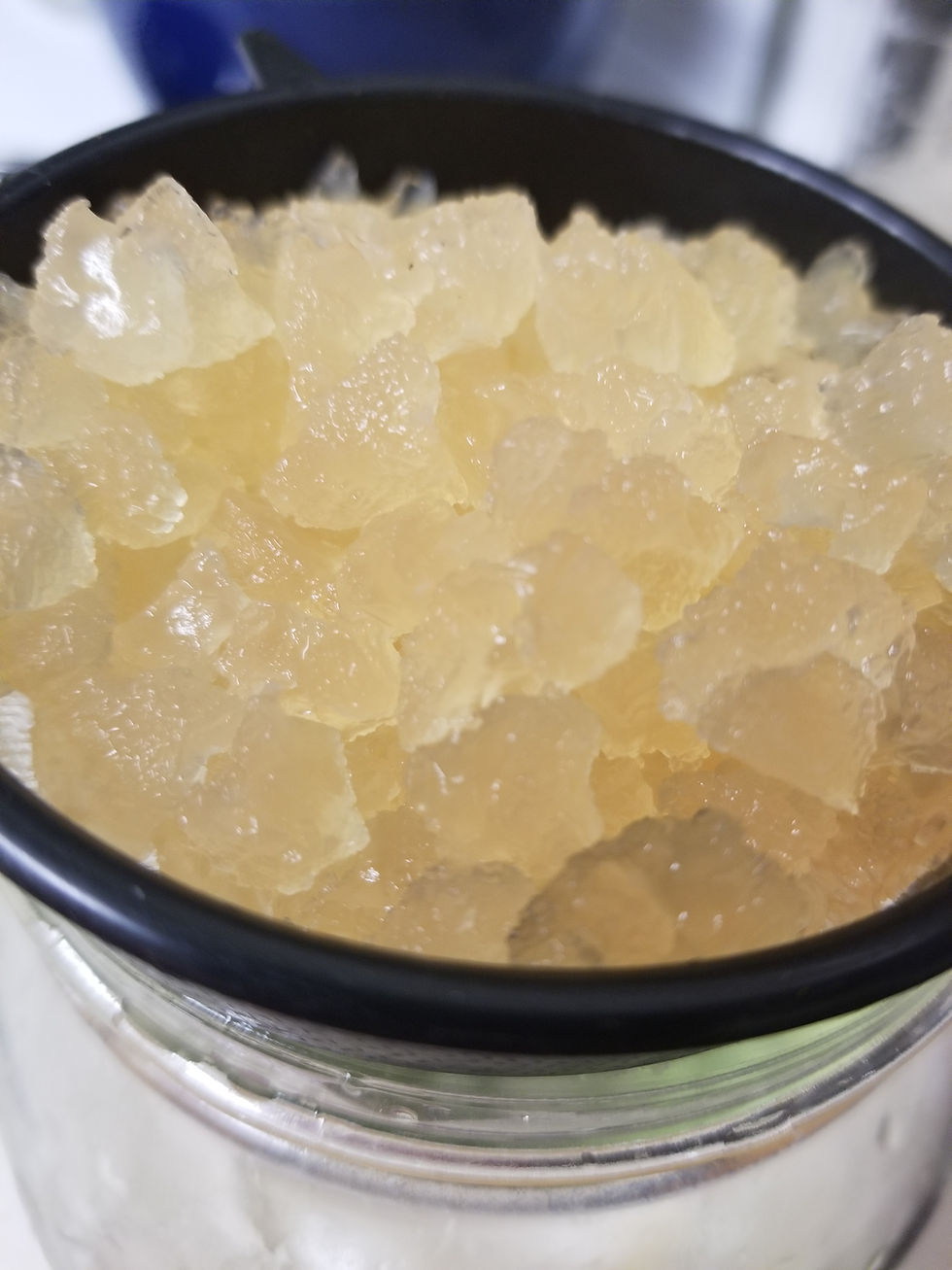Wouldn't it be nice if soda was healthy, didn't rot our teeth, and didn't make us fat? Well, water kefir delivers! Unlike milk kefir that ferments milk, water kefir ferments sugar water. Using water makes it very easy to create a tasty soda-like drink. You can also use water kefir grains to ferment vegetable juice and fruit juice.
Some of the best benefits are:
No chemicals
No artificial flavors
No dyes
No artificial sugar like aspartame
Has 10-15 strains of good bacteria
Helps repopulate the gut with good bacteria
Boosts immunity
Helps with weight loss
May help fight cancer
Helps boost the healing ability of ingredients used in holistic medicine
Making water kefir is so easy! Here's what you do:
You can purchase water kefir grains online. If you're local to me, I'll share while supplies last. They are usually dehydrated when you purchase them online so you'll want to make a batch or two to give them time to rehydrate.

When you receive your grains, start by using a quart or even a pint-size jar. The bigger the jar, the more grains you'll need.
1) Fill the jar about 3/4 of the way with cold water.
2) Pour your grains into the water and add sugar.
Pint-size jar-1 tablespoon of sugar
Quart-size jar-1-2 tablespoons of sugar
1/2 gallon jar-2-3 tablespoons of sugar
3) Cover the top of the jar with a flour sack cloth, dishtowel, paper towel, napkin, coffee filter, or whatever you want to use. Secure it with either a large rubber band wrapped twice or you can screw the outer ring of the jar lid onto the jar over whatever covering you've chosen to use.
Be sure any cloth you use has tight fibers. You don't want to use cheesecloth because bugs can get into your kefir (and boy do they love sugar water!) You can use a plastic jar lid or the metal ones that come with the jar. Be sure to leave it slightly loose to allow pressure to be released.
4) Set your jar on the counter, out of direct sunlight and away from air vents, for 48 hours. You will notice the water starting to get cloudy and a little bubbly on top. This means it's fermenting!
If your kitchen is cool, especially in the colder months, move your kefir to a room that tends to stay warmer without a draft from vents or doors. The ideal temperature is 75°- 85°. Too hot or too cold will allow bad bacteria to become dominant and will cause your brew to go bad.
5) Once your brew has gone through 48 hours of fermenting, it is time to strain your grains. Be sure to use only non-metal utensils and strainers.
6) Put your grains in a new jar with water and sugar and get your next batch brewing.
Second Ferment (the "soda" stage!)
The second ferment is the best ferment. This is where you get to add different fruits, herbs, vegetables, etc. to create different flavors. This is also where the natural carbonation really kicks in. Second fermenting ramps up the health benefits of kefir as well. More bang for your buck!

1) Pour your freshly brewed kefir into a jar.
2) Add a handful of fresh or frozen fruit, vegetables, herbs, whatever you choose, to your jar. My favorite so far has been with fresh strawberries. I only used about 10 strawberries for a gallon of kefir. I often use frozen fruit, too.
If you prefer, you can use fruit juice instead of fresh or frozen fruit. My favorite juice is pineapple. Find the amount that suits your taste buds. Here's what I like:
Pint-size-about 2oz of juice
Quart-size-about 3oz of juice
1/2 gallon-about 4oz of juice
3) Once you have added your flavors, put a lid on it. It can either be plastic or metal but it should be a lid that will close up tightly. This will allow the carbonation process to start. Let it sit for 1-3 days. The longer it sits, the more bubbly and the tarter it will become. Until you do this a few times, you may have to try your brew every day to see what you like.**Be sure to burp your jar once a day. Open the lid slightly and release some pressure so your jar doesn't explode. No, really.
If you prefer to not have a carbonated product, you can use a cover that allows the brew to breathe.
4) When your kefir is ready, strain the fruit out and put your brew in the refrigerator. If you forget to drink it for a while, don't worry, it will still be good. The probiotic benefits begin to weaken the longer it sits but it will last a long time.
There are so many variations you can do with water kefir. For more information and many more ideas, check out Donna Schwenk's YouTube channel.

Link, R. (2020, August 24). Can This Probiotic Powerhouse Really Boost Health? Retrieved November 12, 2020, from https://draxe.com/nutrition/water-kefir/
Schwenk, D. (2019, December 08). How To Second Ferment Your Water Kefir. Retrieved November 13, 2020, from https://www.culturedfoodlife.com/how-to-second-ferment-your-water-kefir/


.png)
Comments